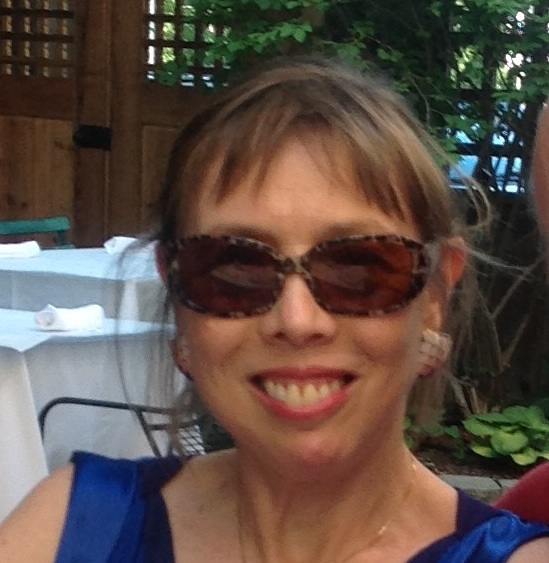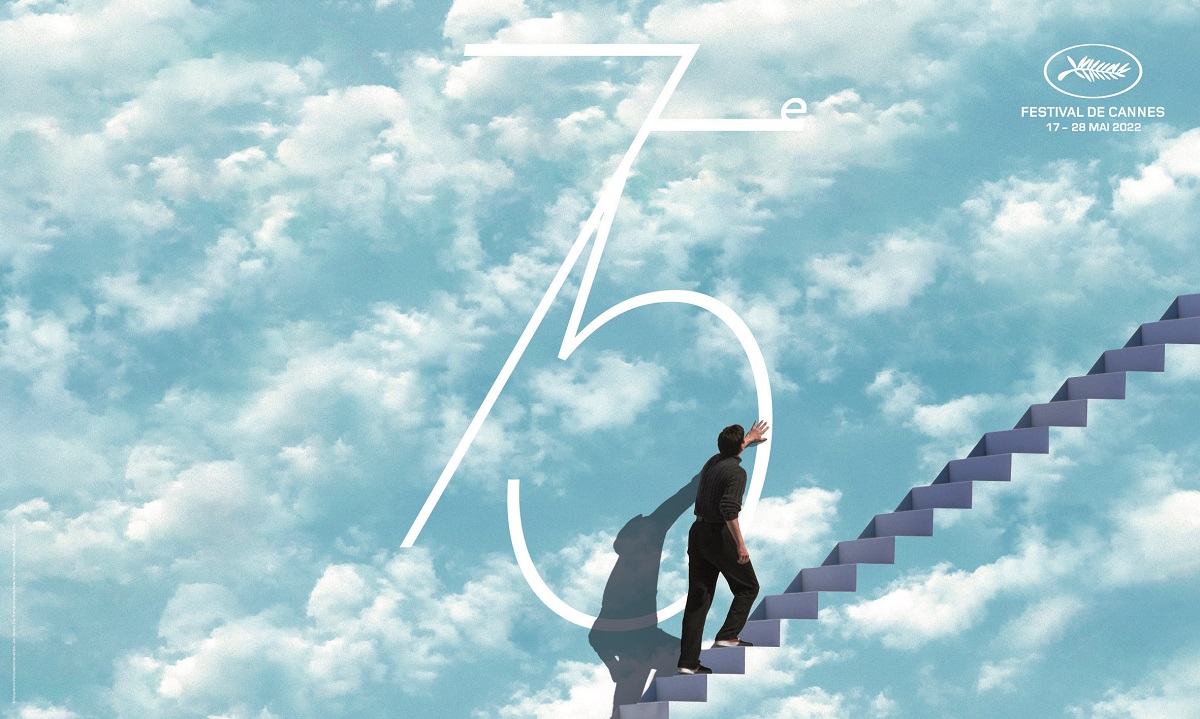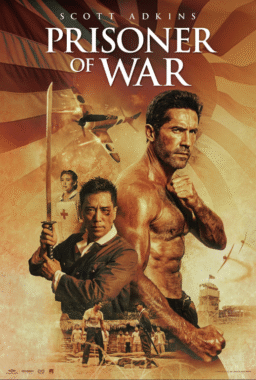The 75th Cannes International Film Festival opens on May 17, ushering in what is touted to be a mandate-free, mask-optional celebration of cinema through May 28, harking back to the carefree good old pre-Covid days (well, sort of). Roughly 50% of the film professionals who normally attend this glorious Riviera-set cinema blowout sat out last year’s delayed festival. Cannes general secretary Francois Desrousseaux is now confidently predicting the imminent arrival of 35,000 accredited guests, no proof of vaccination required this time around.
If the punchy, splatting sounds on the film’s trailer are an indication, zombies will create a Cormanesque splash, literally, for the second time in Cannes opening night history, with the walking dead comedy “Final Cut” (formerly titled “Z”) by Michel Hazanavicius, director of the 2011 Oscar-winning “The Artist.” Promo by the film’s sales agent promises “body parts and fluids are flying.” What could be more surreal than watching stars including Oscar-nominated actress Berenice Bejo ascend the Palais steps in their designer finery and loaner jewels, followed shortly by the possibility of viewing them spliced and diced on the screen?
It appears that Cannes has grown an affinity for horror, a genre not heavily represented among past official selections. From Jim Jarmusch’s zombie comedy “The Dead Don’t Die,” which opened the festival in 2019, to “Annette,” Leos Carax’s sinister 2021 opener, and last year’s surprise Palme d’or winner “Titane” by Julia Ducournau, there appears to be a new fascination with the creepfest experience. Among this year’s competition selection is David Cronenberg’s “Crimes of the Future,” a seeming return to the brand of graphic body-horror that marked the advent of his career.
The world’s longest-running film festival has a history of trading on its glamorous celebrity image. Special events and out-of-competition international premieres up the quotient of guaranteed press-worthy high-profile star appearances, and are the sparkly gems in the festival’s crown. As part of the opening night ceremonies, an honorary Palme d’or will be bestowed upon African American actor Forrest Whitaker, highly regarded in jazz-mad France for his 1988 portrayal of Charlie Parker in Clint Eastwood’s “Bird,” as well as for his recent humanitarian work in Paris. A May 18 tribute to the career of Tom Cruise will feature a screening of “Top Gun: Maverick.” The 60-year-old Cruise reprises his role as a daredevil test pilot, now engaged in showing a new generation how it’s done.
Idris Elba and noted fashionista actress Tilda Swinton are set to appear with the premiere of George Miller’s “Three Thousand Years of Longing,” in which a lonely British woman on vacation in Istanbul is granted three wishes by a genie. Also out of competition, the screening of the romantic comedy “Masquerade” by Nicolas Bedos will bring an appearance by the iconic French star and frequent Cannes guest Isabelle Adjani, president of the Cannes jury in 1997.
Among other special events, Tom Hanks, who portrays Colonel Tom Parker in the sure-to-be-flashy biopic “Elvis,” will attend an out-of-competition premiere with co-star Austin Butler and director Baz Luhrmann. For a parallel non-fiction look at rock stardom, Ethan Coen’s documentary “Jerry Lee Lewis: Trouble in Mind” gets a debut. No word on whether the 91-year-old Lewis will attend. The Midnight Screenings section of the festival features Brett Morgan’s “Moonage Daydream,” a documentary profile of David Bowie, promoted as packed with never-before-seen performance clips.
Actor Vincent Lindon (“Titane”) serves as the first French jury president in more than a decade. Unlike more aloof stars, he has long proved to be a populist charmer on the red carpet, often stopping to sign autographs and clasp hands with the fans who reach out across the barricades along the Croisette. It remains to be seen how the vulnerable humanist seen on the screen will translate as the biggest of the festival’s big cheeses. Historically, the Cannes jury president reigns supreme over his eight fellow jurors, laying down the rules and setting the tone.
Lindon’s jury is evenly divide between men and women, and includes: Oscar-winning Iranian director Asghar Farhadi (“The Salesman”); American/English actress Rebecca Hall (“Christine”); French director Ladj Ly (“Les Miserables”); American director Jeff Nichols (“Loving”); Indian actress/producer Deepika Padukone); Swedish actress Noomi Rapace (“The Girl with the Dragon Tattoo”); Oscar-nominated Norwegian director Joachim Trier (“The Worst Person in the World”); and Italian actress Jasmine Trinca (“The Gunman”).
While the film industry arrivals at Cannes, from the lowest personal assistant or intern to the most lauded director and star unpack their bags, the festival will no doubt once again be forced to pry open one of its most bulging pieces of the old baggage: the controversy surrounding the minimal representation of women in the competition for the Palme d’or. This year, five women directors have been selected, an all-time high, seeing as the previous record was four. Before anyone reaches for a celebratory glass of something fizzy over the increased odds, it must be remembered that Julia Ducournau, the 2021 Palme winner for “Titane,” was only the second female winner over the past seventy-four years.
It’s always tempting to interpret a subliminal message in the image the festival selects for its official poster. This year, it’s a still from “The Truman Show,” depicting Jim Carrey ascending a staircase in the clouds. In this image, the steep stairs metaphorically evoke the long flight of steps to the festival Palais, as well as the ethereal journey up floating steps in the festival’s iconic film trailer. The poster’s aspirational figure is stretching up his arm as if to seize the sky, and, yeah, of course it’s a guy. Just sayin.’
The Cannes festival is made up of many curated parts. While the official competition for the Palme d’or is the big one, accompanying sidebar selections, which regularly feature a host of noteworthy and adventurous choices, include the more avant-garde Un Certain Regard (A Certain Regard) section, and the auteurist Quinzaine des realisateurs (Directors Fortnight). The bounty doesn’t end there. An array of new international productions will screen under one or the other seemingly interchangeable categorical designations that include Special Screening, Midnight Screening, Out of Competition, and the new Cannes Premiere.
While Cannes is dizzyingly diverse in its viewing possibilities for the accredited press and film industry personnel, with many films still seeking international distribution in the accompanying film market, the world’s attention typically focuses on the Palme d’or competition. This coveted award is presented with pomp in a glittery closing night ceremony that most often combines haute couture glamour with the goofy unrehearsed charm of a high school pageant.
More than any other festival, Cannes has consistently burnished its legacy by consistently supporting the careers of former Palme competitors and winners by repeat invitations to compete year after year. The directors of twelve of the twenty-one films announced for this year’s competition have previously competed for the Palme d’or with earlier films. Four are previous Palme winners.
In this very exclusive It’s-not-Cannes-without-Dardenne category are first and foremost the Belgian co-directors Jeanne-Pierre and Luc Dardenne. This year, their ninth time in competition, they present “Tori and Lokita,” a drama charting the struggles of two African teen immigrants. The brothers have been scooping up an assortment of Cannes prizes since 1999, when “Rosetta” brought them the first of their two Palmes. Their second was for “The Child” in 2005. Additional awards include: Best Screenplay for “The Silence of Lorna” (2008), Jury Prize for “The Kid with a Bike” (2011), and Best Director for “Young Ahmed” (2018).
Japanese director Hirokazu Kore-eda, whose heart-tugging dramas most often involve knotty family relationships, joins the competition for the sixth time with “Broker,” which centers on a drop-off site for unwanted babies. He won the Palme d’or in 2018 for “Shoplifters,” and the Jury Prize in 2013 for “Like Father, Like Son.” Similarly, Romanian director Cristian Mungiu is an old hand at Cannes competition. He caused a sensation in 2007, winning the Palme d’or for his illegal-abortion-themed “4 Months, 3 Weeks and 2 Days.” Mungiu went on to score Best Screenplay with “Beyond the Hills” (2012) and Best Director for “Graduation” (2016). He’s back with “R.C.N.,” a fictional reflection on Romanian history.
Swedish director Ruben Östlund skewered the art world with his Palme d’or-winning satire “The Square” in 2017. With this year’s competition entry “Triangle of Sadness,” he casts an eye on the world of international fashion, with a cast headlined by Woody Harrelson. Although not a Palme winner so far, it’s not for lack of trying for French director Arnaud Desplechin, who will be competing for the honor for an impressive seventh time, with this year’s “Brother and Sister.” Marion Cotillard and Golshifteh Farahani star in a story that focuses on two estranged sisters processing the death of their parents.
A select group of directors with unique histories and cult reputations are sure to inspire speculation as to their prospects in this year’s competition for the Palme d’or. If the current Cannes fascination with the fantastic holds, venerable Canadian director David Cronenberg may be overdue for renewed consideration with “Crimes of the Future,” starring Viggo Mortensen, Kristen Stewart, and Léa Seydoux. French director Claire Denis, who has built a passionate critical following with more than a dozen highly acclaimed feature films to her credit, hasn’t been invited to the Cannes competition since her first feature “Chocolat” in 1988. This belated return could be her year with “The Stars at Noon,” a romantic thriller set during the Sandinista revolution in Nicaragua.
The popularity of Korean cinema in the wake of the 2019 “Parasite” Palme d’or and Oscar wins remains high, which could bode well for Park Chan-wook, who has in past years won Cannes jury prizes for “Oldboy” and “Thirst,” and the independently sponsored Queer Palm for “The Handmaiden,” all films with a provocatively violent twist. He competes with “Decision to Leave,” a detective mystery involving an attractive widow.
Anne Hathaway, Anthony Hopkins, and Jeremy Strong are scheduled to walk the red carpet with American James Gray’s coming-of-age competition entry “Armageddon Time,” set in Queens, NY, in the 1980s. Gray has been a contender for the Palme four times since 2000, with films including “The Immigrant,” and has not yet been awarded even a minor prize. The only other American director in the official selection is independent director Kelly Reichardt. It’s her first time competing for the Palme, with the comedy/drama “Showing Up,” starring Michelle Williams as a sculptor on the verge of a career breakthrough.
In 2008, following a special Cannes screening of “Four Nights with Anna,” his first film in almost two decades, combative Polish director Jerzy Skolimowski famously declared, “To those who like me—I’m back. And to those who don’t like me—I’m back.” Having directed only three features since that pivotal year, he’s back again for a seventh time in Cannes competition since 1972. His film “Eo” co-stars Isabelle Huppert and a donkey, and sounds like shades of Robert Bresson’s “Au hasard Balthazar,” an allegorical tale of a long-suffering beast of burden.
Among possibilities for a Palme d’or win, directors to watch closely include several who have emerged from relative obscurity to show great promise in the recent past at Cannes. Belgian Lukas Dhont was selected for the A Certain Regard section in 2018, with “Girl,” his moving drama of a trans teen’s struggle to be accepted as a ballerina. “Girl” won the prestigious Camera d’or, the prize for a first or second feature, the independently sponsored Queer Palm, and the FIPRESCI Prize, given by the international critics. He’s now in the official competition with “Close,” charting the intense friendship of two teen boys.
French director Léonor Serraille won the Camera d’or in 2017, for her first feature, “Montparnasse Bievenue,” a bright and loony comedy of a determined young woman and her fluffy cat on the move in Paris. One of the five female directors competing for the Palme with only her second feature, she premieres “Mother and Son,” a portrait of an immigrant African family meeting the challenges of Paris.
2018 was a key year for Iranian-born Danish director Ali Abbasi, who premiered “Border,” winning the A Certain Regard prize for one of the most debated and talked about films of that festival. A highly original, weirdly mythical thriller with a mind-blowing surprise ending, “Border” set up great expectations for Abbasi’s next film. He has a shot at the Palme d’Or, his first time in the official competition, with the ominous-sounding “Holy Spider,” set in Iran’s holy city Mashad, where a religious fanatic is on a murderous rampage.
Current events are sure to put an additional spotlight on dissident Russian director Kirill Serebrennikov. He was under house arrest in Russia since 2017, and prevented from attending Cannes when his two previous films, “Leto” (2018), and “Petrov’s Flu” (2021), premiered in competition. A declared supporter of Ukraine, Serebrennikov, now living in Germany, competes for the Palme with his period biopic “Tchaikovsky’s Wife.” Meanwhile, the Cannes administration has avoided programming any Russian directors siding with the Putin regime, and recently confirmed that press accreditation is denied to Russian journalists who do not support the festival’s official pro-Ukraine stance.
This year’s competition boasts two Italian directors, Mario Martone, and Italian-French actress/director Valeria Bruni Tedeschi. Each has experienced modest success in previous Cannes festivals. Martone has been screened in Cannes three times in the past but was in competition for the Palme only with “Troubling Love” (1995), based on an Elena Ferrante novel. He competes this year with “Nostalgia,” a film that follows a man who returns to his old neighborhood in Naples after a 40-year absence.
Better known for her more than 100 roles in front of the camera, Bruni Tedeschi nonetheless imbues her small number of films as director with sensitivity, emotional range and comic flare. She was awarded two A Certain Regard prizes for “Actresses” (2007), and competed for the Palme with “A Castle in Italy,” 2013. “Les Amandiers,” aka “Forever Young,” her latest as director, stakes out a place in the official competition with a coming-of-age story of three young actors entering a legendary acting school
Newcomers in competition include Saeed Roustayi, an award-winner in Iran best known for “Just 6.5″ (2019), competing with “Leila’s Brothers,” and Swedish-born Tarik Saleh, best known for “The Nile Hilton Incident” (2017), competing with “Boy From Heaven.” Also completely new to the competition are Belgian co-directors Charlotte Vandermeersch and Felix Groeningen with the Italian-language generational saga “The Eight Mountains,” and Spanish minimalist Albert Serra, with “Tournament sur les Iles, aka “Bora Bora,” aka “Pacification,” a drama centering on a successful novelist facing a crisis.
One of the magic aspects of Cannes is that Palme d’or winners can seemingly come out of nowhere. All the predictions in the world, all the history, and all the supposed favored positioning on the part of the programmers can come to naught when the jury gets to work. Cannes-watchers are wise not to dismiss long-shot candidates, because anything is possible despite the closing night groans and howls of critics and the dashed hopes of claimed front-runners. Like every Cannes festival, it promises to be a wild ride.












